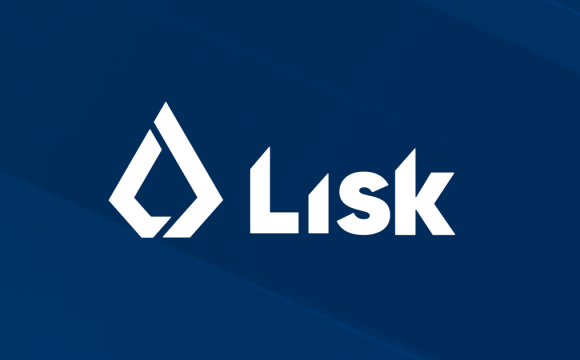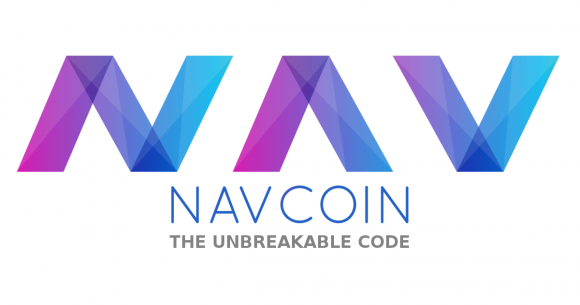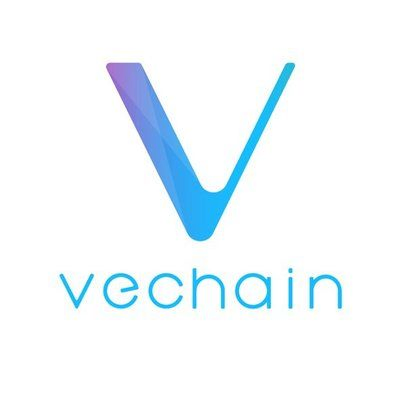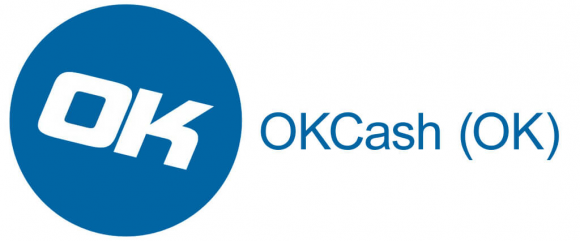There are different ways of earning an income from cryptocurrencies. The leading option is through actively participating in exchanging cryptocurrencies where investors usually buy digital assets at the lower price and sell them when the price rises. This process is high risk.
However, cryptocurrencies can have lucrative and stress-free returns through passive income generating means like Proof-of-Stake (PoS). This investment plan entails holding onto your cryptocurrency and selecting the appropriate Proof-of-stake digital currency to get rewards. Generally, Proof-of-Stake is the opposite of Proof-of-Work. In this case, PoS works on a process similar to lotteries where every staked crypto operates like a raffle ticket. This model is different from PoW where mining discovers new blocks and authenticate payments.
Under PoS, users who own a coin stake a given amount on the network and isolate the currency where it cannot be used. If the need for creating fresh blocks arises, the isolated coins are selected randomly to validate the process. The wallet that has more coins has higher chances of getting the block reward.
Users who stake are able to get some rewards that are then channeled back to the network as an investment. This model benefits both users and the network since all parties can receive a fraction of the staked coins at a given period of time. A majority of PoS carry a minimum investment requirement and they need a constant connection to a wallet as a way of keeping the ROI up.
Picking The Best Cryptocurrency For Staking
Investing in cryptocurrencies is risky due to the volatility of the market. Note that while staking, the coins are locked up in a wallet for a period of time. In the event, the value of the cryptocurrency drops this can be a challenge. The yields from staking might not be sufficient to cover for the drop in the coin’s value.
As a result, you need to be careful when picking a coin for staking. If you are a beginner to staking, then it is vital you start with minimum amounts. The goal is to stake an amount you can lose without any problem. Always conduct sufficient research on the staking rewards and the particular staking protocols. As part of your research, look at what other investors are saying about the particular coin you are about to stake.
Furthermore, go for a coin that easily resonates with you and one that you expect will be around into the future. When you stake, you are contributing to the growth of the project.
Top Coins To Stake In 2019
If you have settled for staking as a form of earning passive income, choosing a legit, reward paying asset can be challenging. We have a compiled a list of coins that have the potential of giving you better returns in 2019.
Cosmos

Cosmos is a decentralized network of independent, scalable, and interoperable blockchains called zones. The platform aims at creating the foundation for a new token economy. Photon is the ecosystem coin for Cosmos and is used to move tokens around the network as well as pay fees. ATOM is the staking token used by “The Cosmos Hub”. The zones are powered by classical Byzantine fault-tolerant (BFT) consensus protocols like Tendermint. Some zones act as hubs with respect to other zones, allowing many zones to interoperate through a shared hub.
For the average Cosmos user, the best way to stake ATOMs is by delegating to one of the Validators of the system. Staking ATOM can bring a yearly yield of 12.66% while the monthly reward stands at 1.05%. Staking of Cosmos is based on a hard slashing. In this case, user funds stand the risk of being slashed if any block were to be double-signed. This can be risky.
IOST

IOST stands for Internet of Services Token and it’s the native currency of a blockchain infrastructure with the goal of solving the scalability through Efficient Distributed Sharding (EDS). The asset is working on a blockchain technology that is ready for mass adoption through Blockchain as a Service.
The perfect way to stake IOST is through voting for one of the producers (Servi Nodes) in the network. Voters on the network share 50% of the entire Block and Ecosystem Bonus Rewards. The voting is through the IOST Biss Dashboard. The Block and Token Issuance Rewards are usually paid on a daily basis while the Ecosystem Bonus Rewards is quarterly. The IOST inflation has been set at 2% p.a. For the first year, there is another ecosystem bonus of an additional 2% on top. The returns from staking depend on the total number of voters. Note the fewer voters will result in higher rewards. The yearly staking reward stands at 15.26%.
NEO
 NEO has some similarities to Ethereum. The cryptocurrency supports smart contracts and offers the functionality of setting up dApps and ICOs. This project usually known as the ‘Chinese Ethereum’ is future-oriented due to its wide range of upcoming projects. Developers of NEO seek to make it the base for the smart economy that can be traded with minimal overhead.
NEO has some similarities to Ethereum. The cryptocurrency supports smart contracts and offers the functionality of setting up dApps and ICOs. This project usually known as the ‘Chinese Ethereum’ is future-oriented due to its wide range of upcoming projects. Developers of NEO seek to make it the base for the smart economy that can be traded with minimal overhead.
NEO has an internal currency dubbed GAS. You earn GAS when you stake NEO. Every time you set up an asset on the NEO blockchain, a GAS fee is incurred. Before receiving GAS you must hold your NEO in a wallet. Only Binance and Kucoin exchanges permit staking of the NEO asset. It is advisable to use the official NEO wallet or cold storage in order to get payments for the GAS you are owed.
Earning a passive income with NEO is easy since you don’t require a constantly connected wallet to get paid. If you settle on NEO, you are guaranteed of a yearly return of 4-6%. Neo also comes with the staking calculator to determine how much you will earn.
NavCoin
 NavCoin is a product that emerged as a Bitcoin fork. It is ranked among the early adopters of Proof of Stake. Over the years, NavCoin has remained consistent by providing at least 5% every year. Note that NavCoin does not attract any minimum requirements for staking.
NavCoin is a product that emerged as a Bitcoin fork. It is ranked among the early adopters of Proof of Stake. Over the years, NavCoin has remained consistent by providing at least 5% every year. Note that NavCoin does not attract any minimum requirements for staking.
With NavCoin, the more coins you stake the bigger your rewards and the quicker you will receive them. For example a small stake of around 50 NAV will take approximately 200 days to earn a reward by staking a block. Note that the 5% return depends on you keeping your wallet online all year long.
VeChain
 VeChain has some similarities to NEO. The digital asset has a strong focus on the supply chain industry with some prominent partnerships. VeChain has a Proof of Authority blockchain coin, which is similar to a Proof of Stake blockchain, but with a different consensus approach..
VeChain has some similarities to NEO. The digital asset has a strong focus on the supply chain industry with some prominent partnerships. VeChain has a Proof of Authority blockchain coin, which is similar to a Proof of Stake blockchain, but with a different consensus approach..
If you stake your VETs you will receive in return a token called VTHO.To stake VeChain, you need a mobile app. The asset works like NEO and GAS. Note that VTHO fuels transactions on the VeChain blockchain. Depending on how much you hold the ROI starts from 2%. VeChain also comes with economic and X-nodes that gives you bonuses.
PundiX (NPXS)
 The goal of PundiX developers is to have an open source end-to-end system that will spur faster adoption of cryptocurrencies. The PundiX blockchain depends on POS terminals, mobile applications and smart cards to enable using cryptocurrencies to everyone.
The goal of PundiX developers is to have an open source end-to-end system that will spur faster adoption of cryptocurrencies. The PundiX blockchain depends on POS terminals, mobile applications and smart cards to enable using cryptocurrencies to everyone.
From the staking perspective, investors can earn up to 19.15% in profits. If you buy 1.5 million NPXS coins for $1000 the returns can be $191.5 dollars per year. This information was taken from stakingrewards.com and might change.
On 14 December 2018, the yearly staking reward for Pundi X was 30.18% and that dropped to a 19.15%.The price in USDT value however, continue to grow – doubling from December 2018.
Lisk
 Lisk is a decentralized network with its own blockchain system. Unlike other popular cryptocurrencies, Lisk does not use Proof of Work, or Proof of Stake. As a substitute, Lisk uses Delegated Proof of Stake (Dpos), a consensus algorithm. The platform creates decentralized applications through the popular JavaScript programming language. It focuses more on ease of use and adaptability.
Lisk is a decentralized network with its own blockchain system. Unlike other popular cryptocurrencies, Lisk does not use Proof of Work, or Proof of Stake. As a substitute, Lisk uses Delegated Proof of Stake (Dpos), a consensus algorithm. The platform creates decentralized applications through the popular JavaScript programming language. It focuses more on ease of use and adaptability.
With the Lisk network, only the top 101 delegates have a say in forging blocks. The delegate receives staking rewards meaning that there is an incentive for one to become an active voter. The Lisk Nano Wallet is for staking and voting for delegates in a rather complicated system compared to staking other cryptos. Rewards vary between holders from month to month. Reports, however, indicate that you can get about 10% of the initial investment.
Reddcoin (RDD)
 Reddcoin serves the general public. The platform is used to ease online payments for the masses. Users of this network have access to free transactions. The network works by linking micro-payments into leading social networks for paying generated content that has value. The payments are in the form of tipping.
Reddcoin serves the general public. The platform is used to ease online payments for the masses. Users of this network have access to free transactions. The network works by linking micro-payments into leading social networks for paying generated content that has value. The payments are in the form of tipping.
Staking RDD is a very user-friendly process. Start by downloading the Reddcoin Core wallet for desktop and load your RDD into the wallet. The staking process will begin in eight hours after the coins have reached maturity. Users who stake in RDD can get rewards of about 5% per year based on the initial investment.
However, the staking process can be hard especially for beginners. In some cases, synchronizing with the blockchain can take days to complete, and your wallet must stay connected to generate income. Use the Reddcoin Stake Calculator for accurate estimation on your earnings.
Ark
 Developers of Ark want to join disparate blockchains together via the SmartBridge technology. In the end, the link will offer a quick and scalable service independent from the platform being used. This cryptocurrency that doubles up as an ecosystem has no competitors because of its unique idea.
Developers of Ark want to join disparate blockchains together via the SmartBridge technology. In the end, the link will offer a quick and scalable service independent from the platform being used. This cryptocurrency that doubles up as an ecosystem has no competitors because of its unique idea.
Ark resembles Lisk because both platforms make use of a Delegated Proof-of-Stake system where delegates act as agents of verifying transactions. Ark only requires votes of 51 delegates to come up with new blocks. Under this model, participating delegates will authenticate payments and earn varying rewards. Each delegate will then share a percentage of the reward to members who voted in their favor.
Unlike other cryptocurrencies, staking with Ark comes with unique advantages. You are able to earn while your wallet is offline. The only thing you are required to do is send your votes and then understand the staking process. The platform also supports staking from wallets like the Ledger Nano S. Good earnings range between 10-12% on the initial investment.
Okcash (OK)
 Okcash is an open-source network that seeks to cater to the needs of businesses and individuals in the crypto world. The platform attracts low transaction fees and giving users control as a way of pushing for mass adoption. Initially, OKcash was a PoW platform but switched to PoS where the developers looked at future stability through staking. In the future, it will halve ROI earnings eleven times in a bid to retain the coin. At the same time, the model intends to keep the appreciation rate predictable. Staking on Okcash has returns of 5% as of last year. In 2019, the rate has declined by half to %2.5. By 2044, the earning rate will be 0.03%.
Okcash is an open-source network that seeks to cater to the needs of businesses and individuals in the crypto world. The platform attracts low transaction fees and giving users control as a way of pushing for mass adoption. Initially, OKcash was a PoW platform but switched to PoS where the developers looked at future stability through staking. In the future, it will halve ROI earnings eleven times in a bid to retain the coin. At the same time, the model intends to keep the appreciation rate predictable. Staking on Okcash has returns of 5% as of last year. In 2019, the rate has declined by half to %2.5. By 2044, the earning rate will be 0.03%.
Before you stake, you need an official wallet and switch on the staking mode. You also require an internet connection that is effective.
Komodo
 Komodo is a ZCash fork centered on privacy. This is an open-source blockchain project that enables transparency, anonymity, and privacy in transactions. Upon joining the market, the developers capped its total supply at 200 million KMD. The project deploys the Delayed Proof-of-Work technology, which secures transactions & offers Bitcoin-level security to its users through modifying the regular proof of work protocol which ensures total immutability. This technology allows users to elect backups of their records and insert them into the Komodo main chain. This platform has the potential to bridge the gap between Ethereum and Bitcoin through the Etomic protocol. Komodo ranks high among staking cryptocurrencies based on lucrative returns. On the Komodo website, stake rewards stand at 5%.
Komodo is a ZCash fork centered on privacy. This is an open-source blockchain project that enables transparency, anonymity, and privacy in transactions. Upon joining the market, the developers capped its total supply at 200 million KMD. The project deploys the Delayed Proof-of-Work technology, which secures transactions & offers Bitcoin-level security to its users through modifying the regular proof of work protocol which ensures total immutability. This technology allows users to elect backups of their records and insert them into the Komodo main chain. This platform has the potential to bridge the gap between Ethereum and Bitcoin through the Etomic protocol. Komodo ranks high among staking cryptocurrencies based on lucrative returns. On the Komodo website, stake rewards stand at 5%.
To stake Komodo, you will need a compatible wallet and hold at least 10 KMD. The staking rewards start accumulating just an hour after holding the tokens. Note that you don’t need to be online for you to earn these rewards. You can purchase Komodo tokens on an exchange and transfer it to the relevant wallet. As a way of keeping the Komodo network active, staking on the system now requires you to complete a transaction each month to earn the maximum passive income for staking. By press time, Komodo was trading at $1.21with a market capitalization of $139,373,374.
V Systems
V Systems is a blockchain database and decentralized platform that seeks to set up to the new digital economy era. The project’s mission is to create a future economy built upon millions of blockchains with a scalable and stable infrastructure that brings a healthy blockchain ecosystem based on the next evolution of PoS, Supernode Proof of Stake (SPoS). V systems seek to materialize the vision by building an innovative database cloud to make blockchain development swift and easy.
VSYS is another perfect asset that enables you to earn passive income through staking. The convenient way to stake VSYS is through leasing the coins to a Supernode of your choose. In this case, supernodes maintain the blockchain and receive rewards in return. Supernodes charge fees of between 18 – 22% of the earned rewards. You will need a compatible wallet and deposit the VSYS. You can buy the coins from an exchange. In the next stage, select the minting function. Enter the supernode address of your choice from https://vsysrate.com/. Lastly, confirm and start earning.
With VSYS, you can start leasing the Supernodes with any amount. We have no minimum coins to deposit. One exciting thing with staking VSYS is the fact that coins have no lock-up period and can be transferred at any time. Supernodes payout rewards to their leaser in daily, weekly, or monthly intervals. You need to make yourself familiar with the payout schedule of the Supernode of your choice before you start leasing to them. The annualized reward rate would be 15.24% considering 35.58% of all coins participate in cold minting and an average Supernode Fee of 20%. Depending on the Supernode you choose, the reward rate would be between 14 – 17%.
Tezos

Tezos is a decentralized blockchain project that governs itself by establishing a true digital commonwealth and facilitates formal verification. This is a technique that mathematically proves the correctness of the code governing transactions and boosts the security of the most sensitive smart contracts. The native cryptocurrency of Tezos is Tez or a Tezzie (XTZ). The platform enables token holders to receive a reward for taking part in the proof-of-stake consensus mechanism.
The network runs on Delegated Proof-of-Stake where token holders can delegate their staking power to validators on the system. The users, in return, earn the fees generated minus the validator’s commission. These validators are known Bakers on Tezos. To start staking, you will need to deposit the XTZ in a compatible wallet. You can use wallets such as Galleon and Tezbox that are audited. You will create a staking address to delegate your XTZ tokens. In the next phase, fund the wallet and delegate to stake capital. At the moment the yield amount for XTZ stands at is 7.31%, but this rate does fluctuate with time. You can find the latest yield on staking rewards.
Conclusion
Staking is one of the lucrative ways to earn an income with cryptocurrencies. If you settle on staking, there are various factors that will guide you on choosing the effective coin. Just like any other cryptocurrency investment, conduct sufficient research before staking. It is vital to go for a future-oriented coin that offers an opportunity to start small. Always remember that staking needs patience before getting significant returns.
Support Zerocrypted
- Trade on Bitmex
- Trade on Binance Jersey
Subscribe to our Newsletter to be a part of our future $1,000 per month contests.


